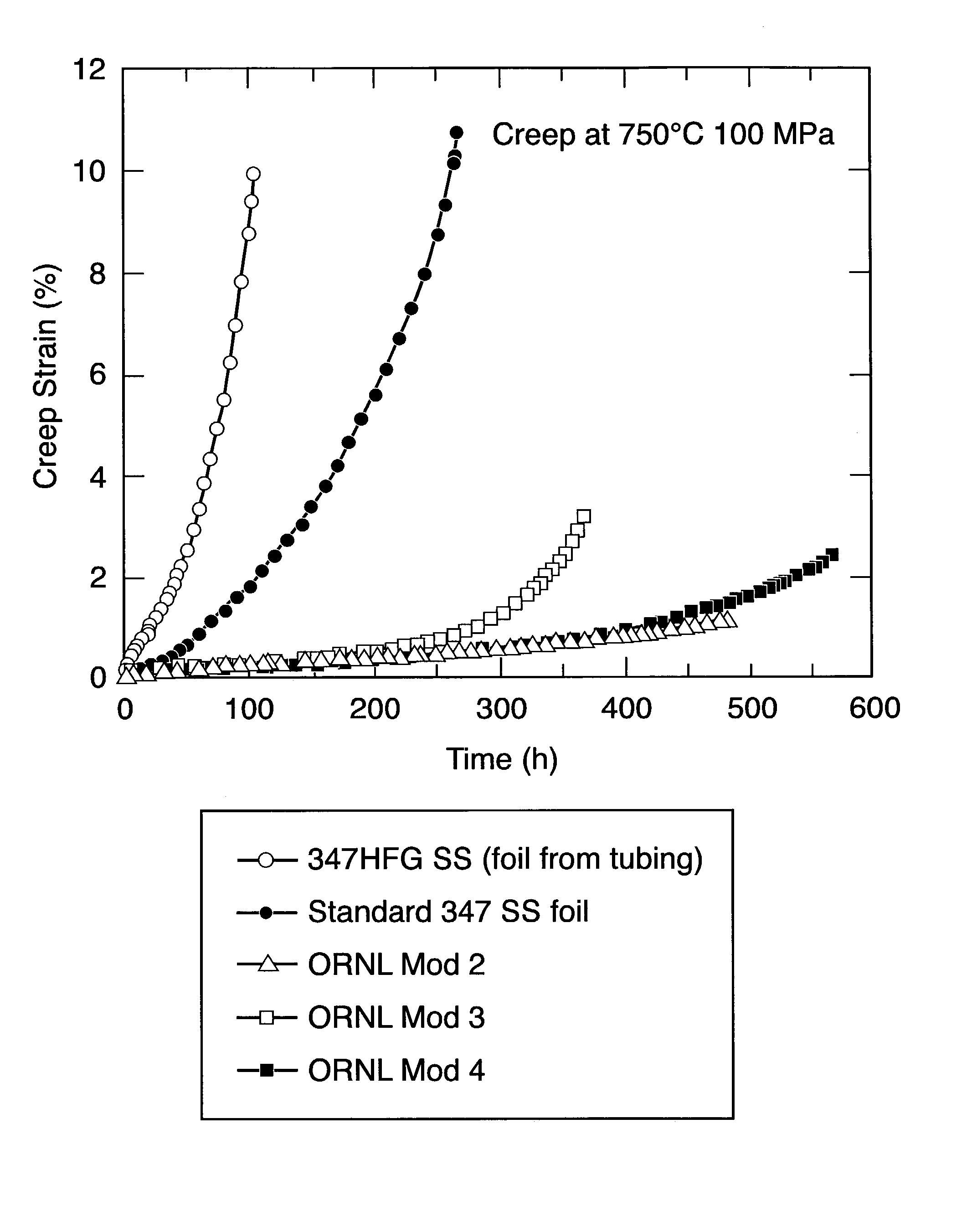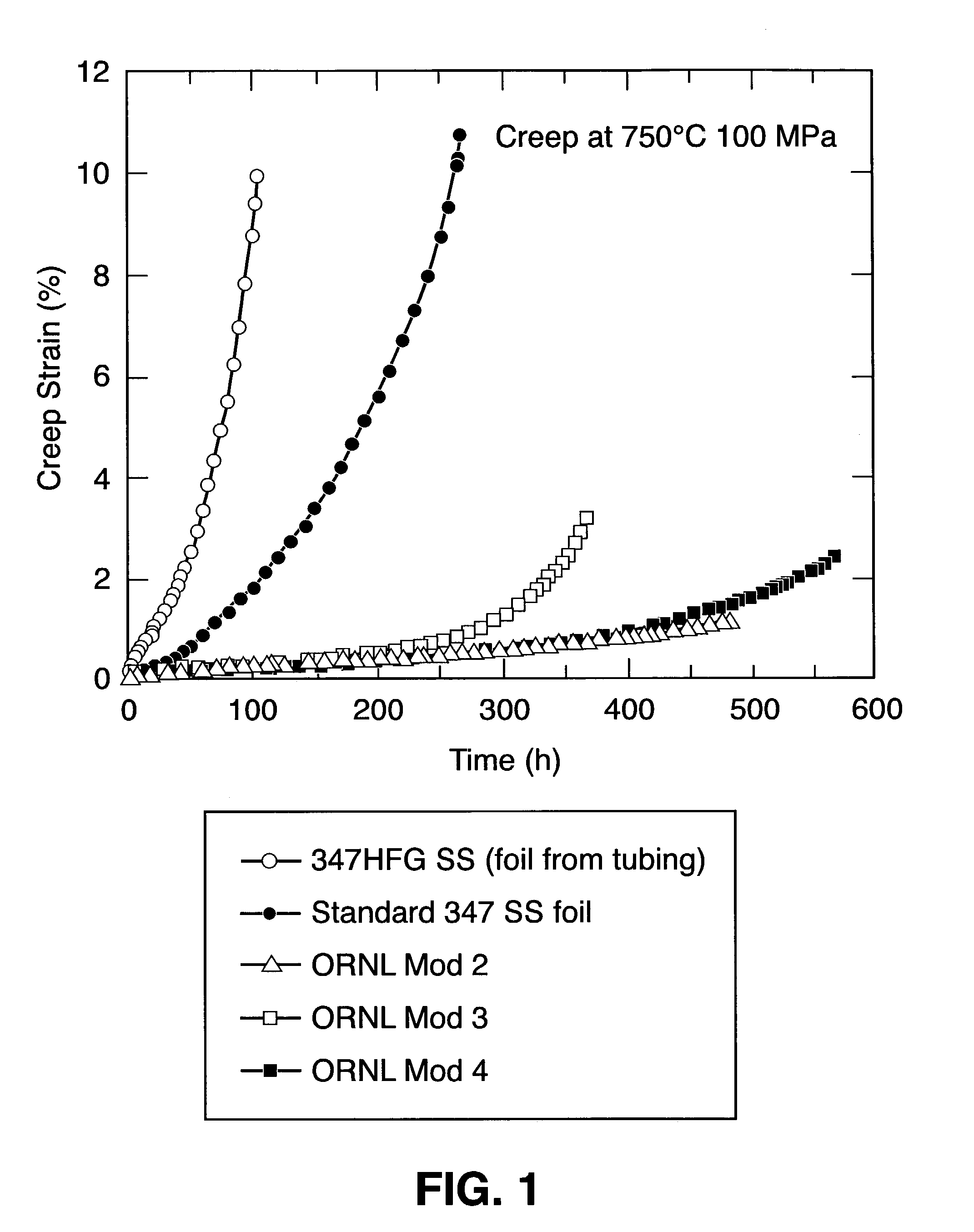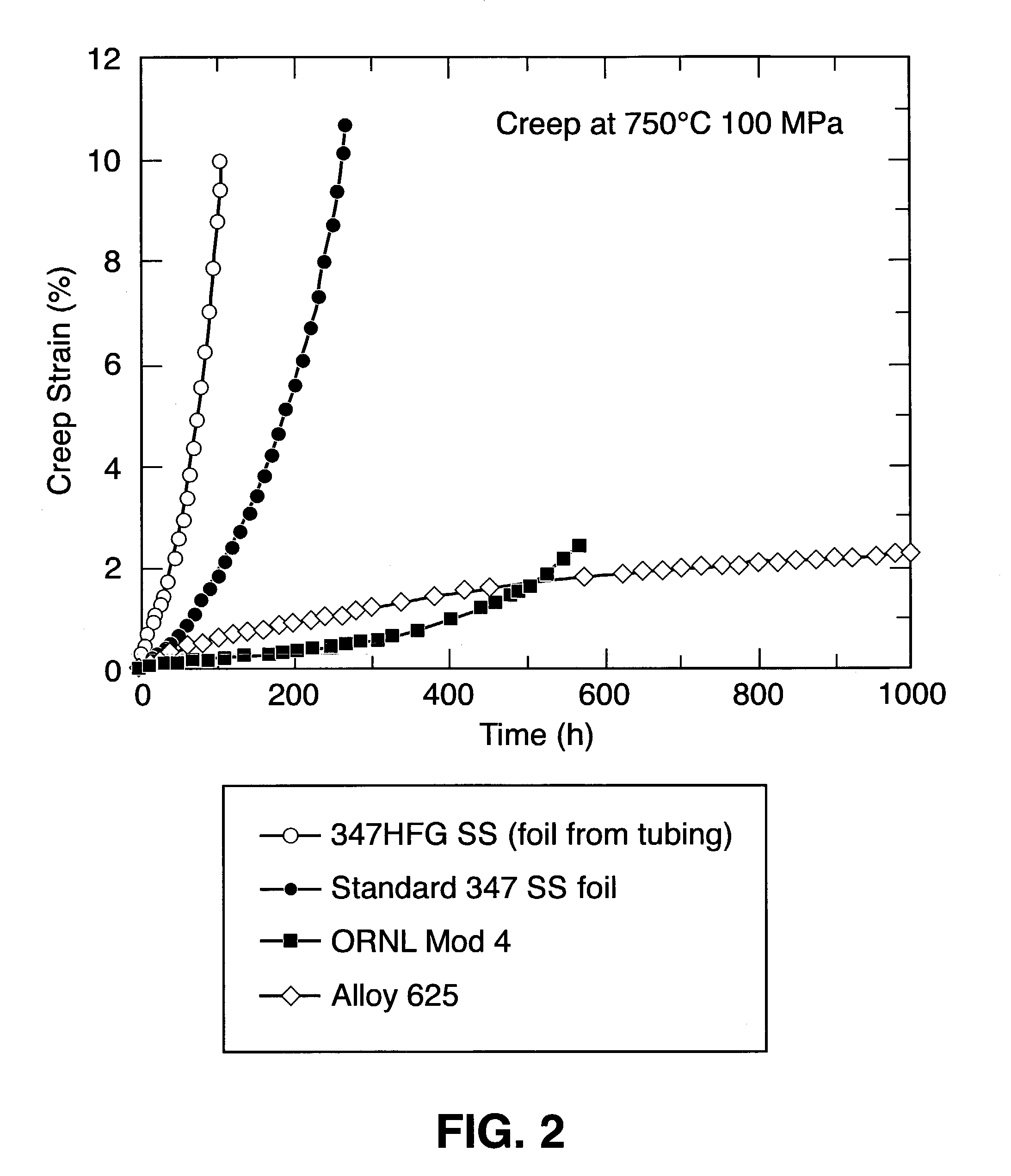Wrought stainless steel compositions having engineered microstructures for improved heat resistance
a technology of microstructure and composition, applied in the direction of heat exchange apparatus, lighting and heating apparatus, etc., can solve the problems of lack of both, lack of heat lack of aging resistance of stainless steels, etc., and achieve the effect of improving heat and corrosion resistan
- Summary
- Abstract
- Description
- Claims
- Application Information
AI Technical Summary
Benefits of technology
Problems solved by technology
Method used
Image
Examples
Embodiment Construction
[0022]The present invention arose from the application of unique empirical design rules developed to directly relate changes in alloy composition to changes in the microstructure that develops not during processing or at the time of fabrication of thin-section articles therefrom, but rather subsequently thereto. Engineered microstructures develop during early service, particularly, exposure of the thin-section stainless steel compositions of the present invention to high temperatures, for example, 550° C. to 950° C., and particularly above 650° C.
[0023]The unique design rules may include, but are not limited to:[0024]1. direct reactant effects of elements added to the composition in order to form precipitates;[0025]2. catalytic effects of elements added to the composition to enhance formation of phases formed by other elements;[0026]3. inhibitor effects of elements added to the composition to impede or eliminate formation of phases formed by other elements; and[0027]4. interference ...
PUM
| Property | Measurement | Unit |
|---|---|---|
| thickness | aaaaa | aaaaa |
| creep strain | aaaaa | aaaaa |
| thickness | aaaaa | aaaaa |
Abstract
Description
Claims
Application Information
 Login to View More
Login to View More - R&D
- Intellectual Property
- Life Sciences
- Materials
- Tech Scout
- Unparalleled Data Quality
- Higher Quality Content
- 60% Fewer Hallucinations
Browse by: Latest US Patents, China's latest patents, Technical Efficacy Thesaurus, Application Domain, Technology Topic, Popular Technical Reports.
© 2025 PatSnap. All rights reserved.Legal|Privacy policy|Modern Slavery Act Transparency Statement|Sitemap|About US| Contact US: help@patsnap.com



